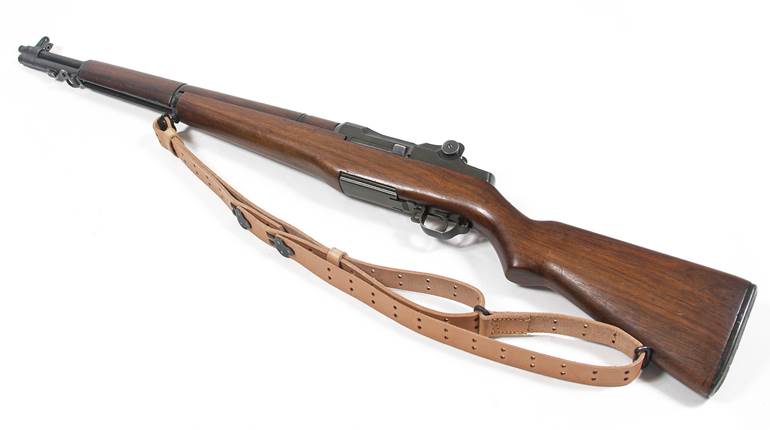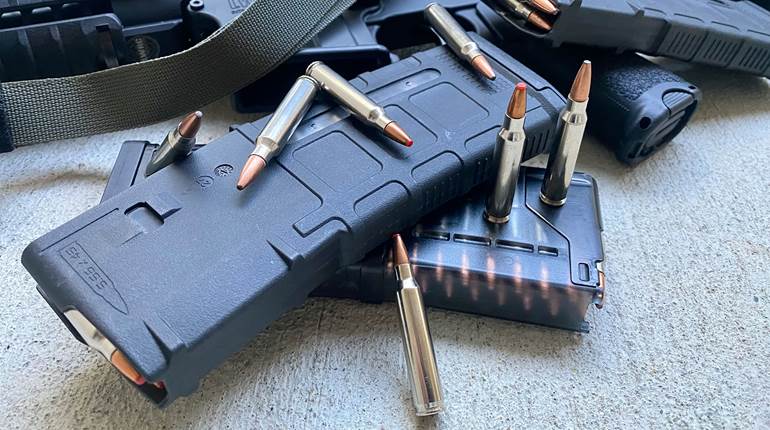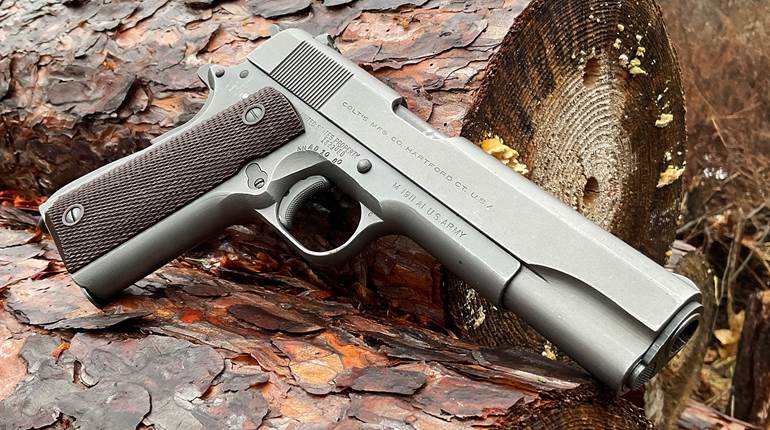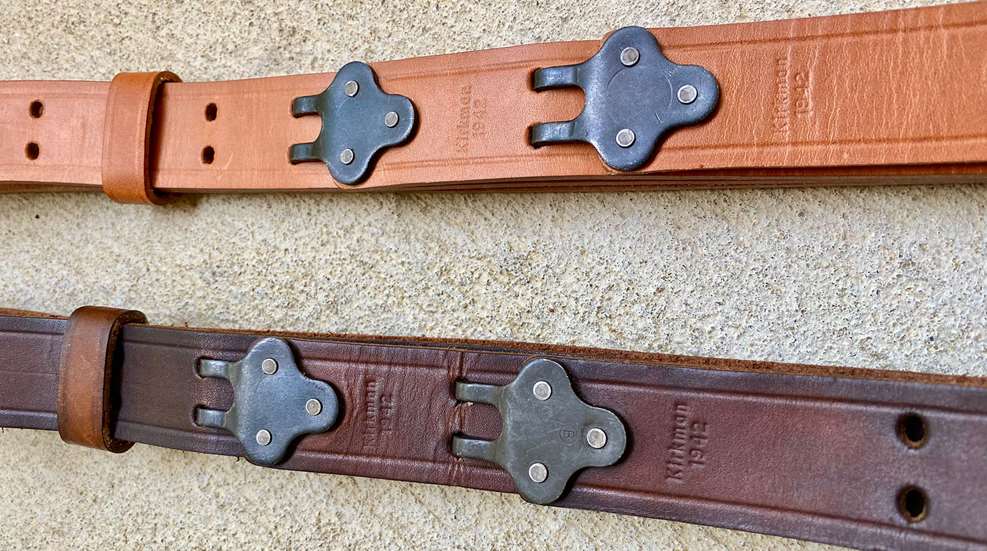
When it comes to the classic era of wood-and-steel U.S. military centerfire service rifles of the first half of the 20th century, whether it be the M1903 Springfield or the M1 Garand, there is one facet that was common among both, other than the cartridge they used: the sling. During both World War I and World War II, the standard sling largely issued to U.S. troops was the Model 1907 leather sling, before being eventually supplanted by webbing and fabric options. Despite such replacement options being developed during World War I and the inter-war period, and later fielded en masse by the end of World War II, the M1907 saw extensive use throughout World War II and beyond.
Today, there are a variety of options for M1907 slings on the market, from salty originals to economic reproductions. Yet, not all M1907 slings are created equal or suited to be put through the rigors of range use that comes with being attached to a rifle. Of the various reproductions made today, one has stood out in particular to me personally, as both a faithful reproduction of the originals and a viable option for use on the range: those made and sold by At The Front.
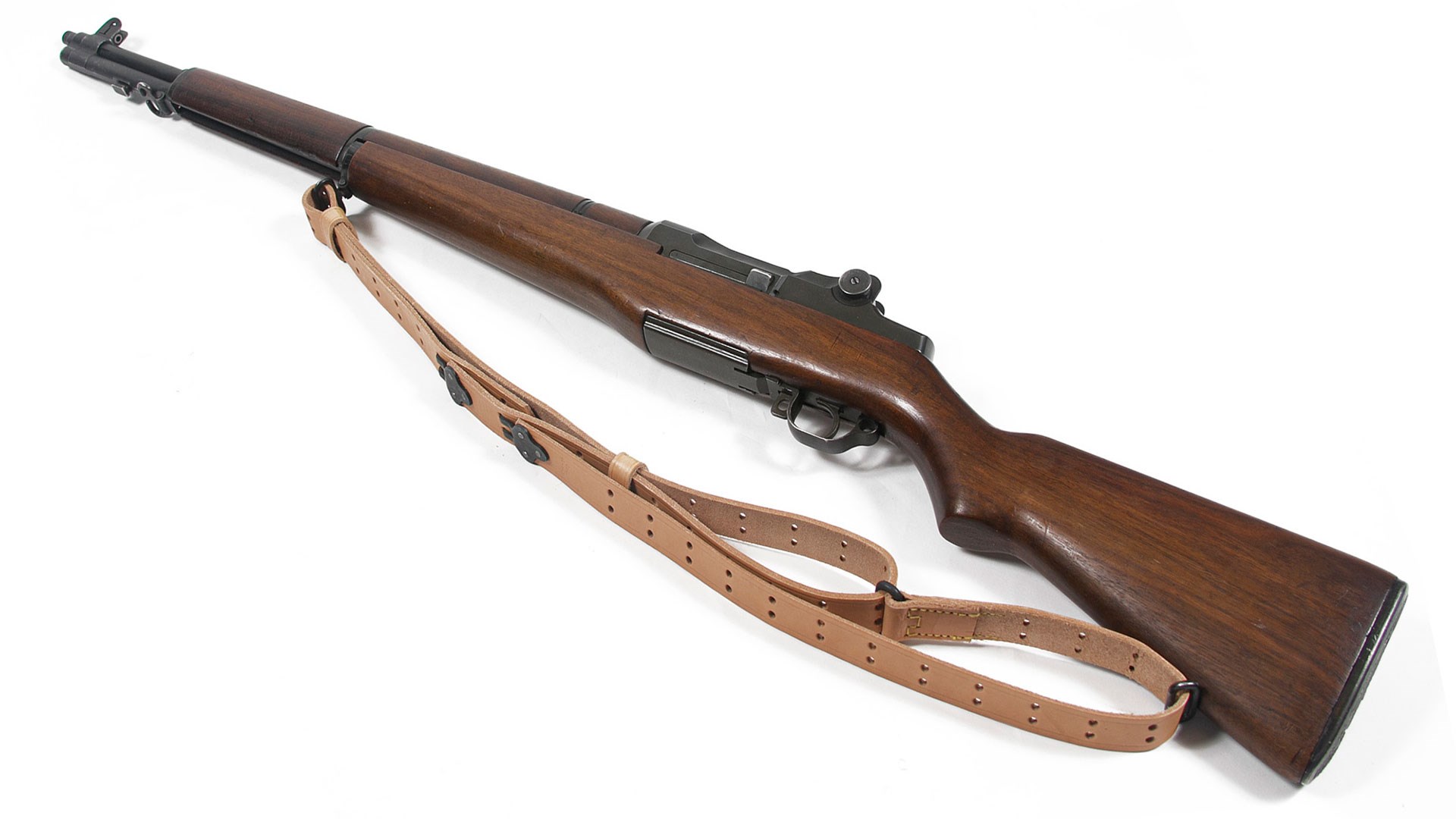 A M1 Garand wearing one of At The Front's World War II version M1907 slings. Courtesy of At The Front.
A M1 Garand wearing one of At The Front's World War II version M1907 slings. Courtesy of At The Front.
The M1907 sling design is a complex arrangement that offers great stability if used properly by the user. Unlike similar leather slings used on service rifles of the time, including those developed by the Germans and British, the M1907 has more components in its construction. Instead of using a single leather strap as the body of the sling, the M1907 uses two straps, connected in the center by a metal band. Each end of the sling connects into itself via hooked heads, which bite into paired holes punched in increments along each sling strap. This allows the front and back portions of the sling to be adjusted independently from one another and offers a wide range of adjustment.
Both sections also use leather keepers, which act as anchors to keep the teeth of the hooks secured into their placement holds. With this arrangement, the user can make fine adjustments to the sling, secure the heads with the keepers, and place pressure into the sling without worrying about loosening under strain, which can be the case with the more simplistic service rifle slings of the time. The forward section of the sling can also be adjusted to create a loop, through which the user can insert their supporting arm to better anchor the host rifle. This worked out great on the rifle range, where the added stability helped anchor the forward section of the rifle, and is still to this day a common sight on rifles used in competition.
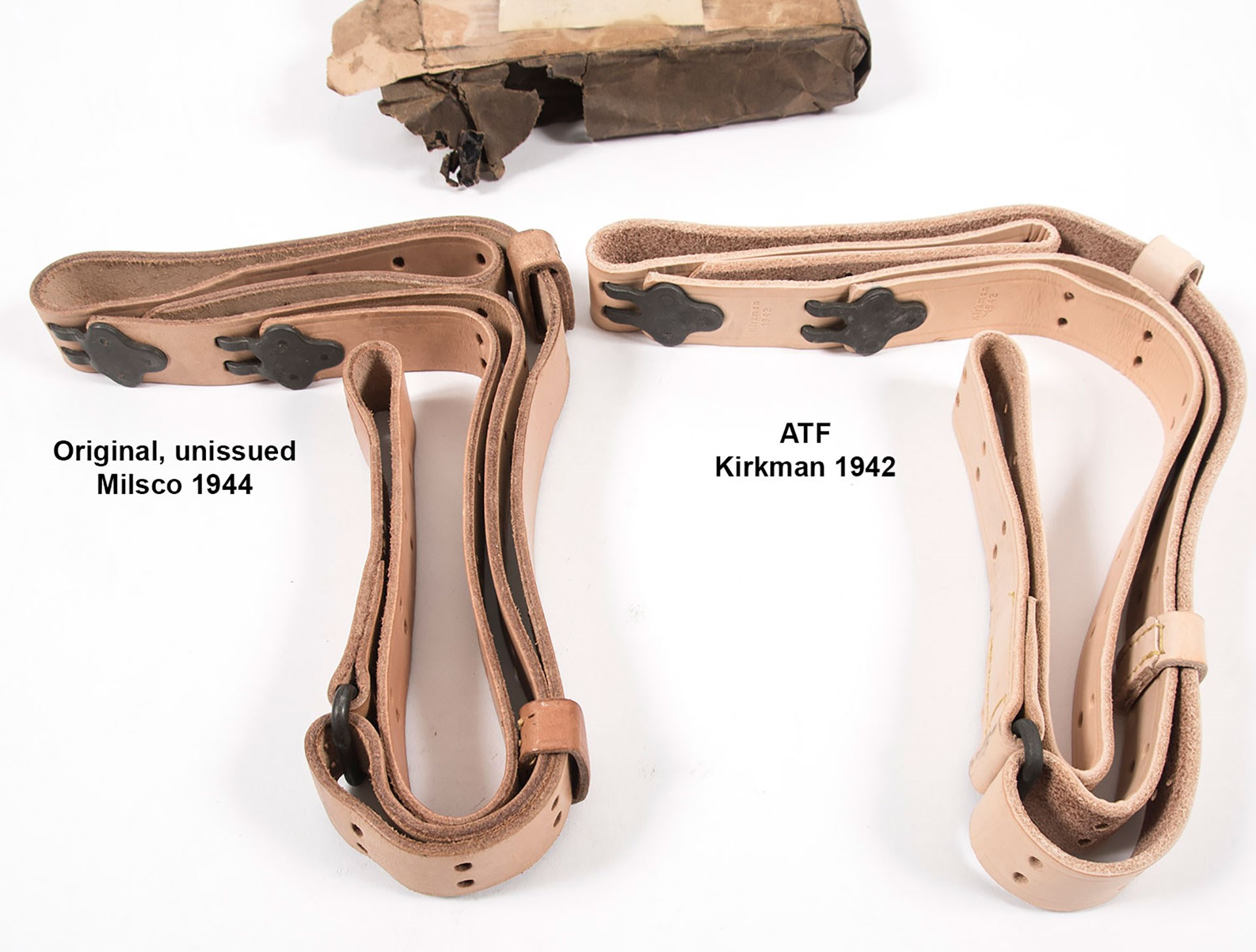 An original, unissued, 1944-dated Milsco M1907 sling (left) compared with one of At The Front's natural colored World War II M1907 slings (right). Picture courtesy of At The Front.
An original, unissued, 1944-dated Milsco M1907 sling (left) compared with one of At The Front's natural colored World War II M1907 slings (right). Picture courtesy of At The Front.
In the modern market, the M1907 sling can be found in a variety of manufactures and styles. From relatively cheap re-enactment or show slings to higher-end, custom-made competition slings. However, what both these spectrums of current production slings on the market often lack are the specific features that were found on the service slings of World War I and World War II. The cheaper end of the spectrum often involves slings made of synthetic or weaker leather that frays after extended use, and they use hooks with steep teeth angles that do not properly set in their holds. While these slings look the part and function well enough to carry a rifle around, they're not the best option for serious use.
On the other end of the spectrum, the more robust, competition-style M1907 slings typically have better leather quality and proper hooks but are often of a thicker profile than the original M1907 service slings and lack the flexibility of the originals. These slings also sometimes feature copper rivets to secure the hooks, which are visually different from the brass or steel rivets used in original production. While the M1907 sling was made by a wide variety of manufacturers during its issue, the major visual differences between them came down to the hook and rivet construction. Blackened brass hooks with brass rivets were used throughout production, and steel hooked and riveted versions entered production during World War II.
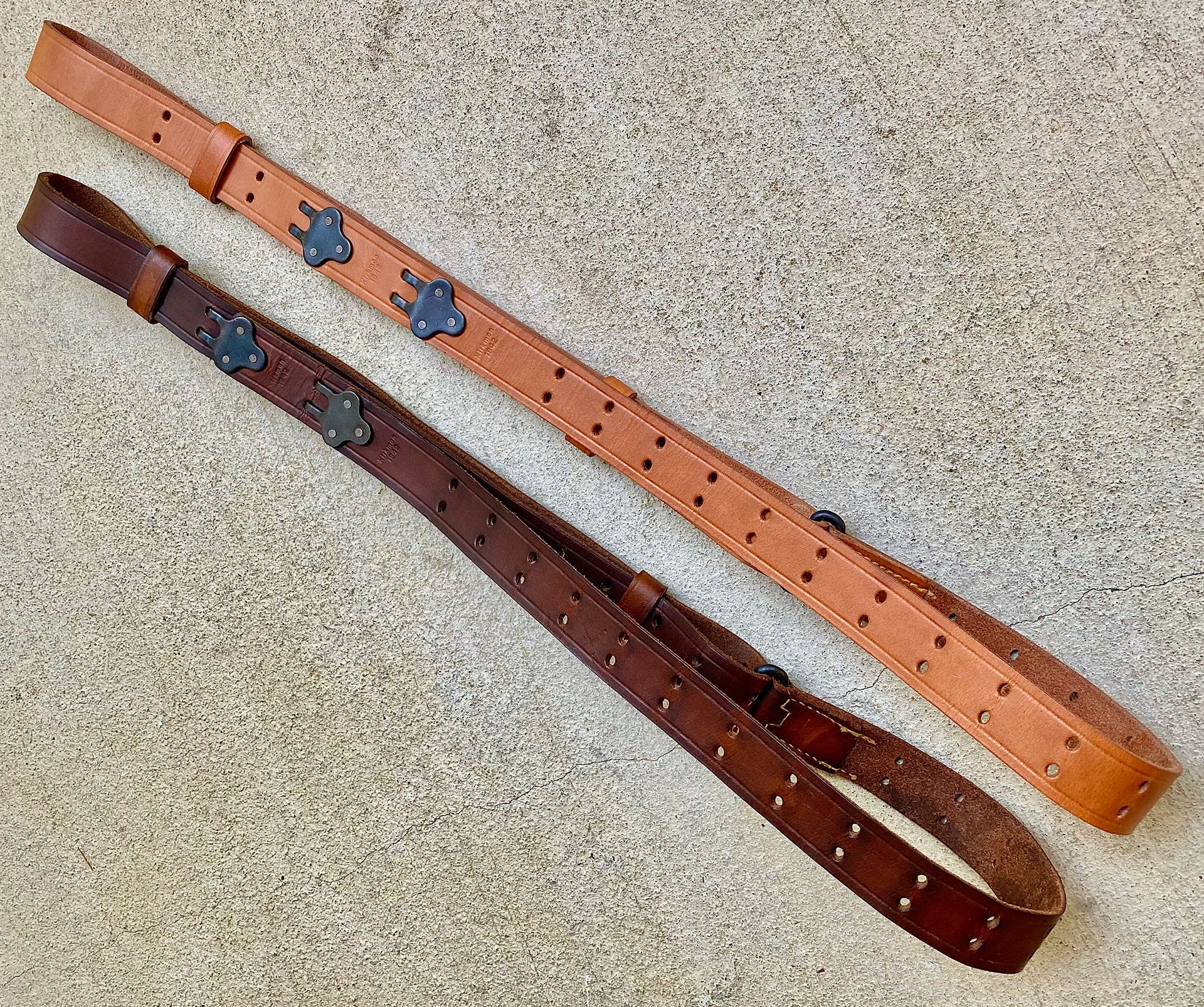 The author's two At The Front World War II M1907 slings, with the naturally colored version on top and aged version on bottom. Note that the naturally colored version has darkened significantly from its original color after a year of use.
The author's two At The Front World War II M1907 slings, with the naturally colored version on top and aged version on bottom. Note that the naturally colored version has darkened significantly from its original color after a year of use.
While all modern reproductions of these slings bear a strong resemblance and function the same, they often lack these specific features. There is, however, one manufacturer of reproduction M1907 slings that produces a product that not only closely follows the finer details of the originals, but is also made sturdy enough for use on the range as intended. At The Front is largely known for its reproduction World War II-era German and American uniforms and field gear, which includes a great deal of reproduced leather equipment, including rifle slings.
For the M1907 sling, At The Front offers two options: a World War I and World War II version. The World War I-era sling features blackened brass hooks with bare brass rivets, while the World War II version sports Parkerized steel hooks and rivets. Both variations of the sling wear a “KIRKMAN” manufacturer mark stamped into the leather just below the hooks, with the World War I version having a “1917” date, while the World War II version has “1942” stamped beneath the manufacturer's mark. Made by At The Front at its facility in Columbia, Ky., the slings are constructed from 8 oz. cowhide leather, sourced from either the USA, Mexico or Brazil, which is cut into 1.25” wide straps.
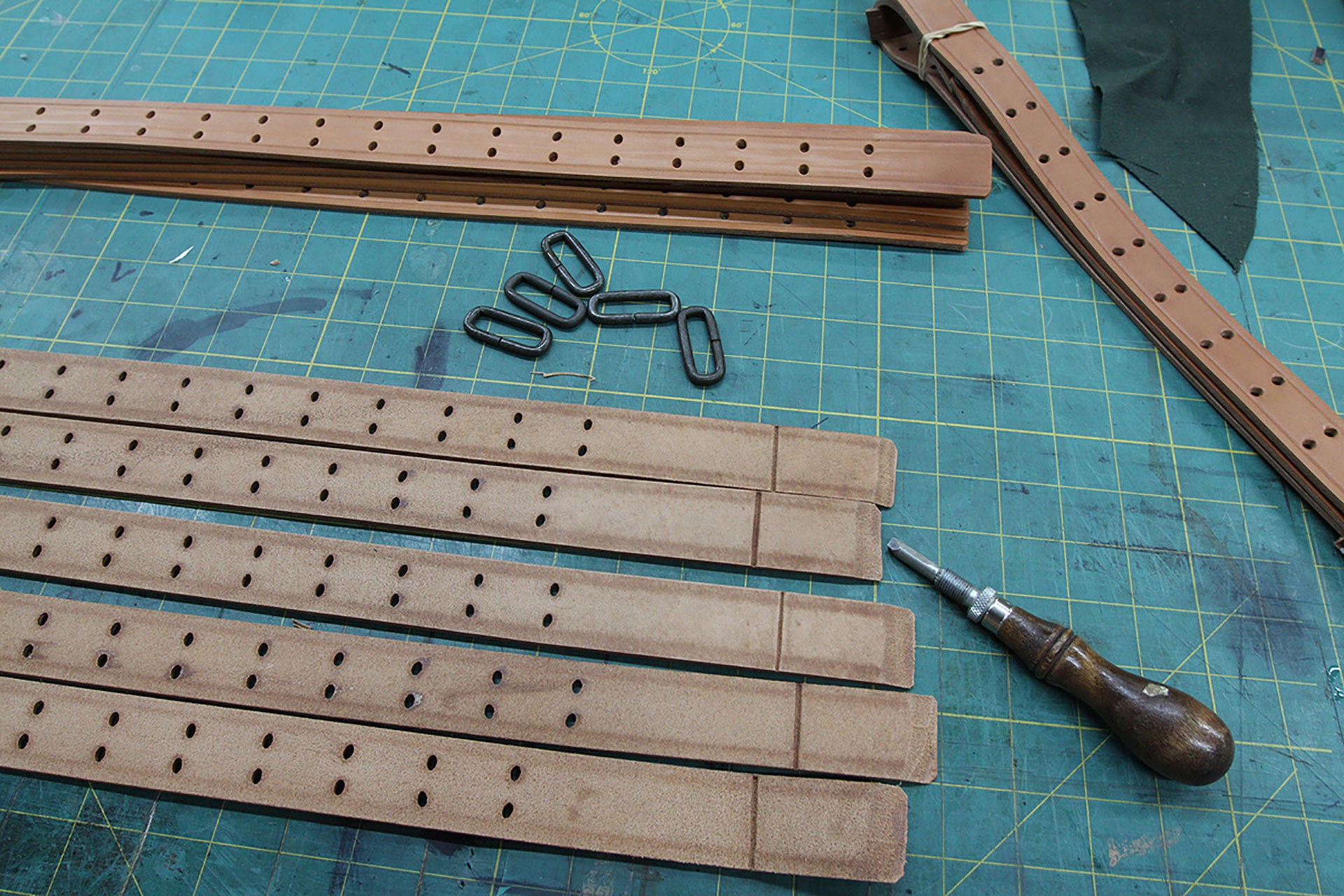 At The Front M1907 sling straps being skipped, cut and creased like the original slings. Courtesy of At The Front.
At The Front M1907 sling straps being skipped, cut and creased like the original slings. Courtesy of At The Front.
The front strap is cut to a length of 46”, while the rear has a length of 23”. Holes for the connecting hooks are punched with gang dies, and the edges of each strap have creased edges, much like the originals. To sew together the keepers and rear strap, At The Front uses custom-made linen thread sourced from Delaware. The end result is a sling that, depending on the version, looks right at home on a M1903 or M1 Garand. Both the World War I and World War II versions come without any staining to the leather, leaving them in a natural color just as newly issued slings would have been. However, for those who wish to have a darker sling, At The Front also offers aged version of both slings, which have been oiled and dyed to give them the look of a worn original.
I purchased two of the World War II versions At The Front M1907 slings a year ago, one natural and the other aged, to see first-hand how they stacked up against the original and some other reproductions. What was apparent right off the bat was the quality of the steel hooks and the leather used for strap construction. The steel hooks of the At The Front M1907 slings are well-made and shaped, with a profile that is right on par with my original 1944-produced Boyt M1907 sling. The teeth of the hooks are also properly swept rearward at a shallower angle than some reproduction slings, resulting in a more secure connection between the hooks and their holds that will not work itself loose when tension is released. The Parkerized finish on the hooks is also well done, with a consistent dark matte-grey color.
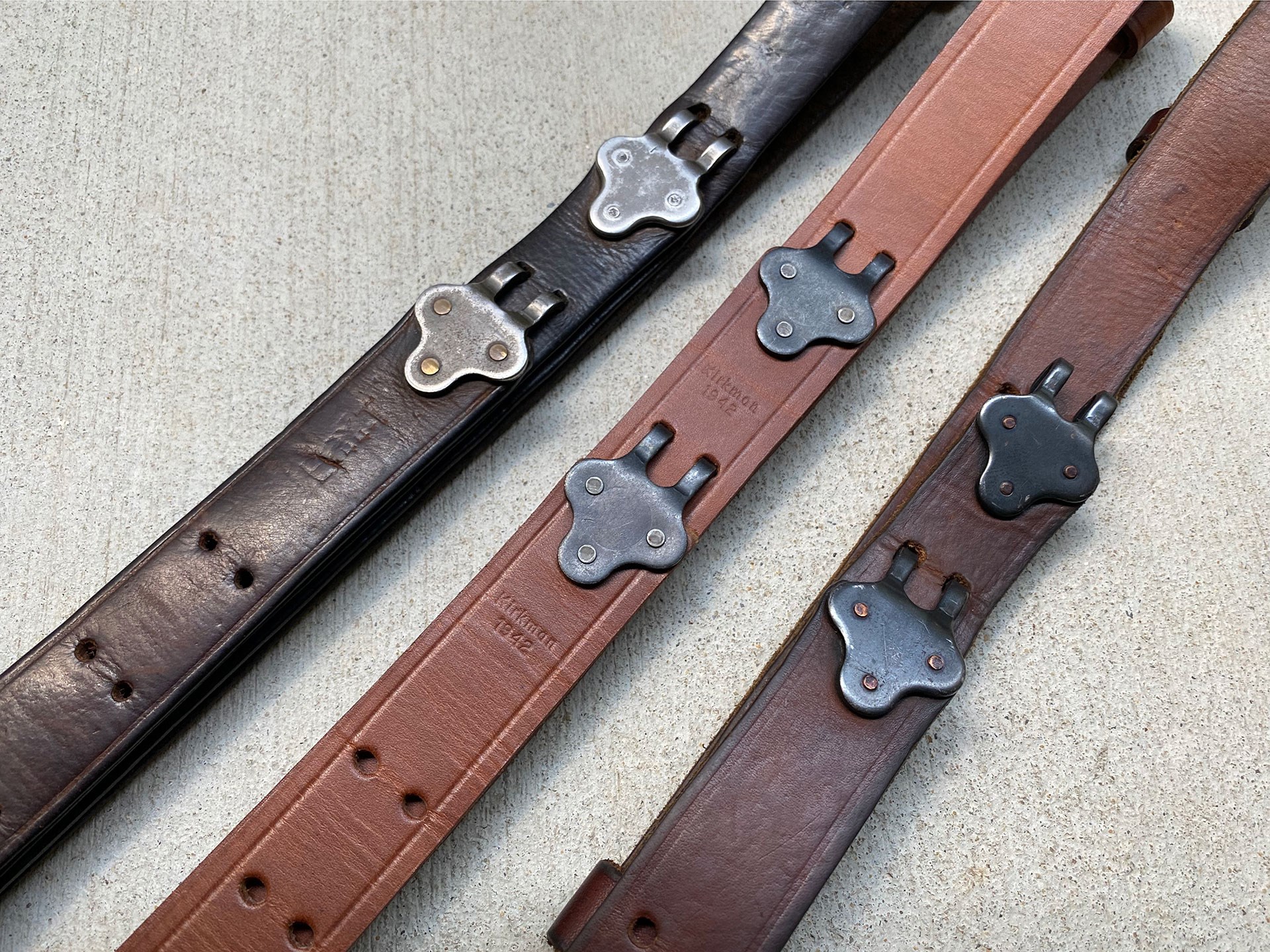 An original 1944 dated Boyt M1907 sling (left), compared with At The Front's World War II M1907 (center) and a "MRT" marked competition M1907 sling (right).
An original 1944 dated Boyt M1907 sling (left), compared with At The Front's World War II M1907 (center) and a "MRT" marked competition M1907 sling (right).
The leather itself is strong and showed little signs of fraying, even after a year of use carrying my M1 from the shoulder. The leather also held firm when applied under pressure to stabilize the rifle, without any large cracks growing from one hole to the next, which can be an issue with some M1907 slings. Yet, the leather was also thin and pliable enough right out of the packaging, compared to some thicker competition M1907 slings, which can require extra oiling and treatment to get them adequately flexible. While the natural-colored sling was very bright in color originally, with exposure to sunlight, oil, dirt and grease, it has gradually darkened to a rich orange-brown color. This process can be further sped up by applying light coats of Ballistol over time, for those who wish to add some age to their sling.
The aged sling, aside from its freshly Parkerized metal and lack of wrinkles, closely matched the dark, oil and dirt-soaked coloring of my World War II-era Boyt. This gives the benefit of having a M1907 sling that has the aged and used look, without having to use an 80-year-old original, which grow increasingly expensive and hard to find in usable condition. Both the World War I and World War II natural colored M1907 slings have a price of $80, while the aged versions both have a price of $100. For more information on At The Front’s reproduction M1907 leather slings, along with the other period gear it reproduces, visit atthefront.com.












